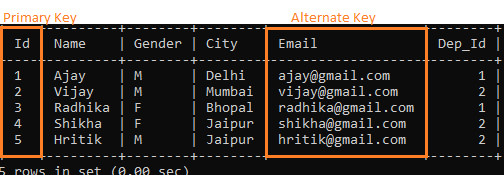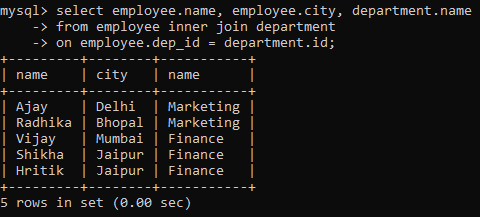Introduction
SQL Keys is the key to your Analytics success!!
Data is growing at an exponential rate, as does the demand for professionals who are well acquainted with databases.
Organizations around the world are looking for scientists and data analysts who can extract meaningful insights from vast amounts of data.. And one of the most important languages to handle databases is SQL. That's why experienced SQL professionals have an edge over their peers when it comes to working with databases..
An important aspect of working with databases is creating a. La creación de una databaseA database is an organized set of information that allows you to store, Manage and retrieve data efficiently. Used in various applications, from enterprise systems to online platforms, Databases can be relational or non-relational. Proper design is critical to optimizing performance and ensuring information integrity, thus facilitating informed decision-making in different contexts.... es un juego de pelota completamente diferente en comparación con la recuperación de datos de bases de datos. Because? Good, creating a database requires a deep understanding of how tables relate to each other within a database and how to handle records so there is no duplicate data.
A very important aspect of creating databases is understanding the concept of keys in SQL. These are nothing more than a group of columns that can help you identify rows in a table uniquely. But like any other entity, there are many types of keys in SQL.
In this article, I will discuss some of the most common SQL keys that any data scientist or analyst should know before starting to work with databases..
I suggest checking the SQL for data science course if you are new to SQL.
Table of Contents
- What are keys in DBMS?
- Super key
- Candidate key
- Primary keyThe primary key is a fundamental concept in databases, used to uniquely identify each record within a table. It consists of one or more attributes that cannot contain null values and must be unique. Its correct design is crucial to maintain data integrity, facilitating relationships between tables and optimizing queries. Without a primary key, ambiguities and errors could be generated in the...
- Alternative or secondary key
- Foreign key
- Composite keyThe "Composite Key" is a rhythmic pattern used in Afro-Caribbean music, especially in styles such as son, Salsa and meringue. It is characterized by a combination of binary and ternary tenses, which generates a sense of rhythmic complexity. Its use in percussion, especially on instruments such as the cajón and timpani, adds dynamism and sonic richness to compositions, making it a fundamental element of these..
What are keys in DBMS?
Databases are used to store massive amounts of information that is stored in multiple tables. Each table can have thousands of rows. It goes without saying that there will be many duplicate rows with redundant information. How can we cope with that? How do we manage logs to store only unique data? Y, How do we relate the multiple tables that are present in the database?
SQL keys are the answer to all these queries.
An SQL key is a single column (the attribute) or a group of columns that can uniquely identify rows (or tuples) on a table.
SQL keys ensure that there are no rows with duplicate information. Not only that, they also help to establish a relationship between multiple tables in the database. Therefore, it is imperative to know the different keys in SQL.
What is a superkey in SQL?
The superkey is a single key or a group of multiple keys that can uniquely identify the tuples in a table.
The superkey can contain multiple attributes that may not be able to independently identify the tuples in a table, but when grouped with certain keys, can uniquely identify tuples.
Let me take an example to clarify the above statement. Take a look at the following table.
Consider that ID The attribute is unique for each employee. Then, we can say that the ID The attribute can uniquely identify the tuples in this table. Then, ID is a super key of this table. Note that we can also have other Super Keys in this table.
For instance – (Id, Name), (Id, email), (Id, Name, email), etc., can be super keys, since they can all uniquely identify the tuples in the table. This is so due to the presence of the ID attribute that is able to uniquely identify tuples. The other attributes of the keys are unnecessary. But nevertheless, can still identify tuples.
What is a candidate key?
The candidate key is a single key or a group of multiple keys that uniquely identifies the rows in a table.
A candidate key is a subset of super keys and lacks unnecessary attributes that are not important to uniquely identify tuples.
The candidate key value is unique and not null for all tuples. And each table must have at least one candidate key. But there can also be more than one candidate key.
For instance, in the example we took earlier, so much ID Y Email can act as a candidate for the table, since they contain unique and non-null values.
Secondly, we can't use attributes like Town O Gender to retrieve tuples from table, since they don't have unique values.
Whereas when consulting the table in the ID The attribute will help us to retrieve unique tuples.
Primary key in SQL
Primary key is the candidate key selected by the database administrator to uniquely identify the tuples in a table.
Of all the candidate keys that can be possible for a table, there can only be one key that will be used to retrieve unique tuples from the table. This candidate key is called the primary key.
There can only be one primary key for a table. Depending on how the candidate key is constructed, the primary key can be a single attribute or a group of attributes. But the important point to remember is that the primary key must be a unique attribute and not null.
There can be two ways to create a primary key for the table. The first way is to alter an already created to add the primary key constraint on an attribute. This is shown below:
Now, if I try to add a new row with a duplicate Id value, it will give me an error message.
The second way to add a primary key is during table creation. All you have to do is add the primary key constraint at the end after defining all the attributes in the table.
To define a primary key constraint on multiple attributes, you can list all attributes in parentheses as below screenshot shown.
But remember that these attributes must be defined as non-null values, on the contrary, the whole purpose of using primary key to identify tuples uniquely expires.
Alternate or secondary keys in SQL
Alternate keys are those candidate keys that are not the primary key.
There can only be one primary key for a table. Therefore, all remaining candidate keys are known as alternate or secondary keys. They can also uniquely identify tuples in a table, but the database administrator chose a different key as primary key.
If we look at the Employees table one more time, since I have chosen ID as primary key, the other candidate key (Email), becomes the alternate key of the table.
Foreign key in SQL
Foreign key is an attribute that is a primary key in your primary table, but it is included as an attribute in another host table.
A foreign key generates a relationship between the main table and the main table. For instance, Besides of Employee table containing personal data of employees, we could have another table Department containing information related to the employee's department.
The primary key in this table is Department ID. We can add this attribute to the employee by making it the foreign key in the table. We can do this when we are creating the table or we can modify the table later to add the foreign key constraint. Here I have altered the table, but creating foreign key during table creation is similar to primary key.
Here, Dep_Id is now the foreign key in the Employee table, while it is a primary key in the Department table.
The foreign key allows you to create a relationship between two tables in the database. Each of these tables describes data related to a particular field (employee and department here). Using the foreign key we can easily retrieve data from both tables.
Note: To operate with foreign keys, you need to know the joints, which you can find in detail in This article.
Using foreign keys makes it easy to update the database when needed. This is so because we only have to make the necessary changes in limited rows. For instance, if he Marketing the department changes from Calcutta to Pune, instead of updating it for all relevant rows in the Employee table, we can simply update the location in the Department mesa. This ensures that there are only a few places to update and less risk of having different data in different places..
What are composite keys?
A composite key is a candidate key or primary key that consists of more than one attribute.
Sometimes it is possible that no attribute has the property to uniquely identify tuples in a table. In such cases, we can use a group of attributes to guarantee uniqueness. The combination of these attributes will uniquely identify the tuples in the table.
Consider the following table:
Here, none of the attributes contain unique values to identify the tuples. Therefore, we can combine two or more attributes to create a key that can uniquely identify the tuples. For instance, we can group ID de transactionThe "transaction" refers to the process by which an exchange of goods takes place, services or money between two or more parties. This concept is fundamental in the economic and legal field, since it involves mutual agreement and consideration of specific terms. Transactions can be formal, as contracts, or informal, and are essential for the functioning of markets and businesses.... Y Product ID to create a key that can uniquely identify the tuples. They are called composite keys.
Key difference between SQL keys
- Claves SQL are used to uniquely identify rows in a table.
- SQL keys can be a single column or a group of columns.
- Super key is a single key or a group of multiple keys that can uniquely identify the tuples in a table.
- Super keys may contain redundant attributes that may not be important for identifying tuples.
- Candidate keys are a subset of Super keys. They contain only those attributes that are necessary to uniquely identify tuples.
- All Candidate keys is it so Super keys. But the opposite is not true.
- Primary key it's a Candidate key chosen to uniquely identify the tuples in the table.
- Primary key values must be unique and not null.
- There may be several Super keys Y Candidate keys in a table, but there can only be one Primary key in a table.
- Alternative keys are those Candidate keys which were not chosen to be the primary key of the table.
- Composite key it's a Candidate key consisting of more than one attribute.
- Foreign key is an attribute that is a Primary key in your main table, but it is included as an attribute in the main table.
- Foreign keys can accept null and non-unique values.
Final notes
In this article, we cover the most common and widely used keys that any professional looking to work with databases should know.
If you are someone looking to work with SQL in Python, I suggest you read this article. Or if you are someone who is looking for some SQL techniques to employ for better data analysis, then you must not miss this great article.
I hope you have enjoyed this article and connect in the comments if you have any questions about this topic.



















